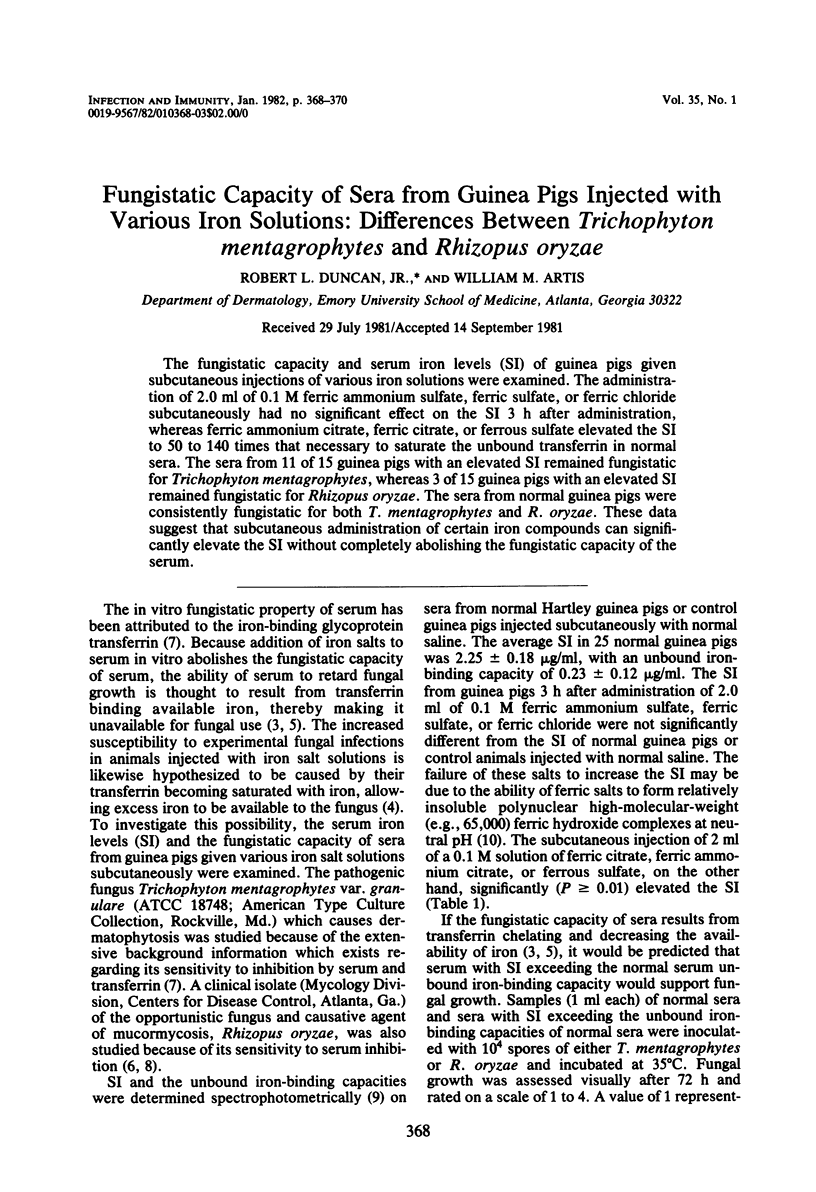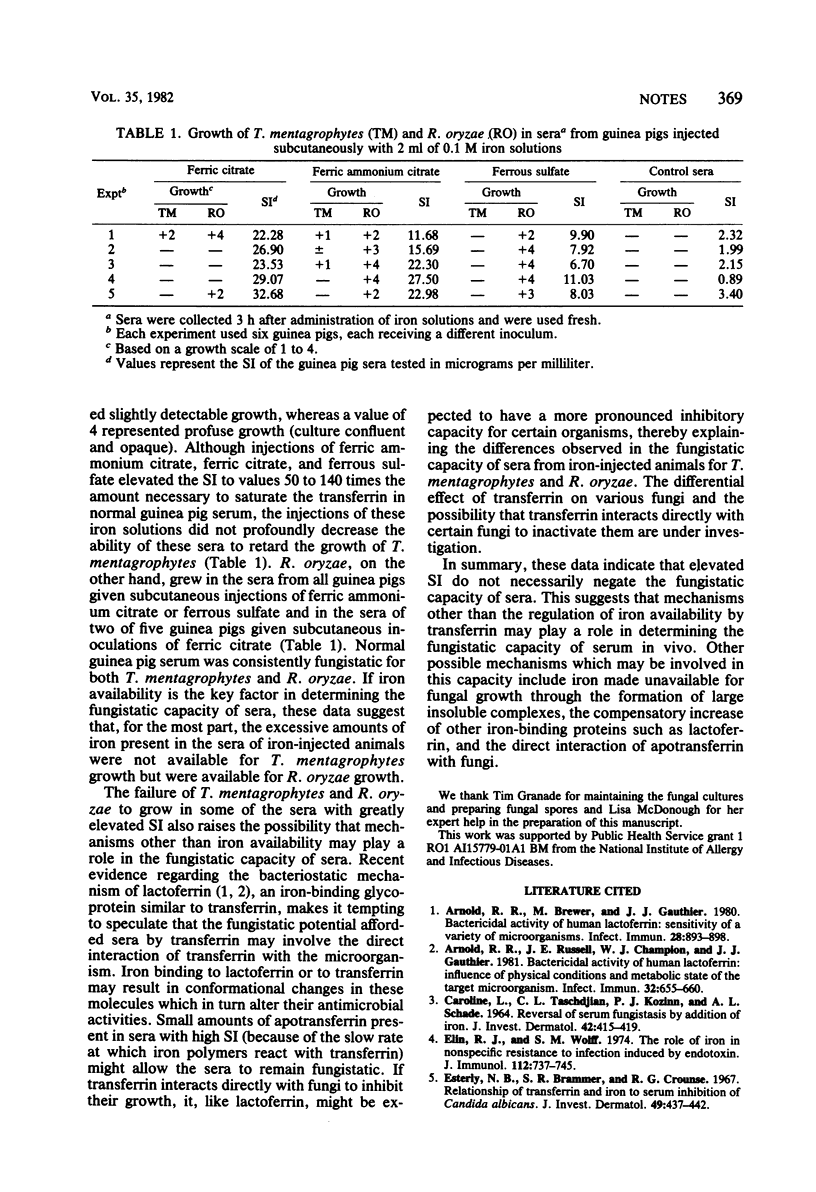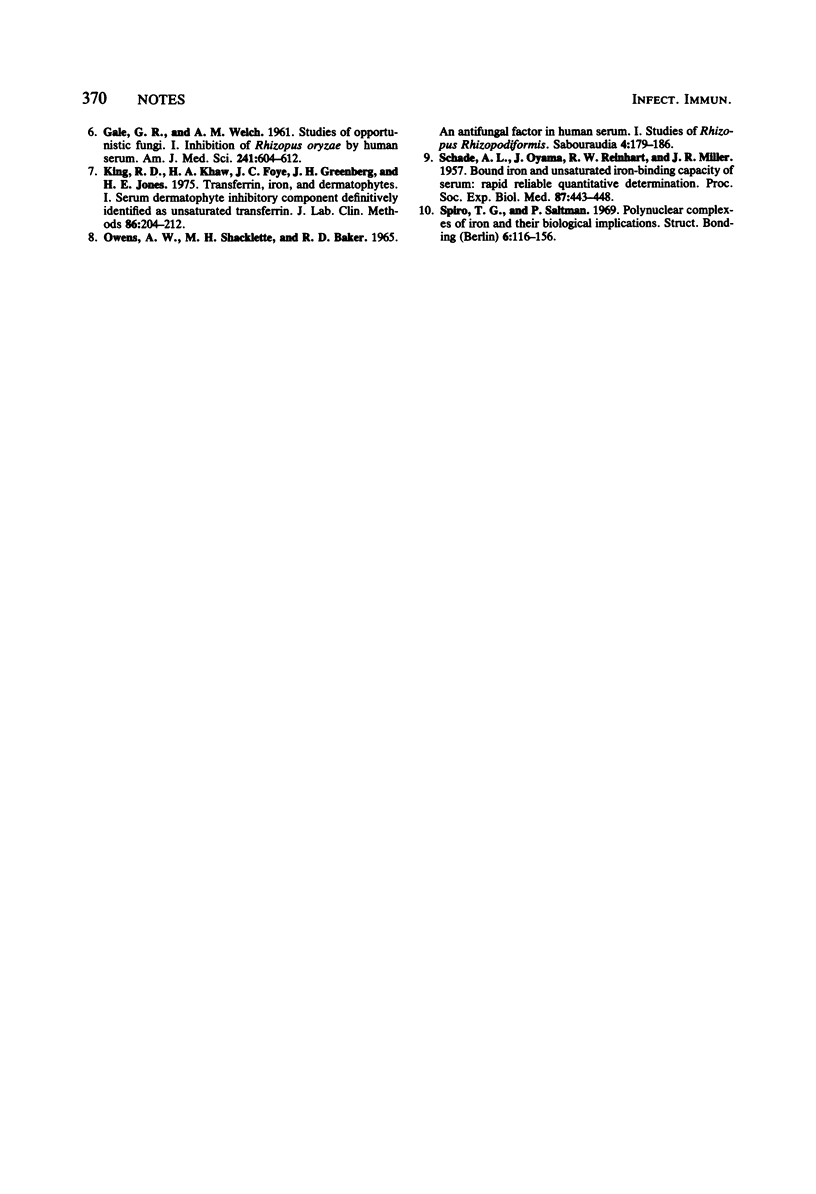Abstract
The fungistatic capacity and serum ion levels (SI) of guinea pigs given subcutaneous injections of various iron solutions were examined. The administration of 2.0 ml of 0.1 M ferric ammonium sulfate, ferric sulfate, or ferric chloride subcutaneously had no significant effect on the SI 3 h after administration, whereas ferric ammonium citrate, ferric citrate, or ferrous sulfate elevated the SI to 50 to 140 times that necessary to saturate the unbound transferrin in normal sera. The sera from 11 of 15 guinea pigs with an elevated SI remained fungistatic for Trichophyton mentagrophytes, whereas 3 of 15 guinea pigs with an elevated SI remained fungistatic for Rhizopus oryzae. The sera from normal guinea pigs were consistently fungistatic for Rhizopus oryzae. The sera from normal guinea pigs were consistently fungistatic for both T. mentagrophytes and R. oryzae. These data suggest that subcutaneous administration of certain iron compounds can significantly elevate the SI without completely abolishing the fungistatic capacity of the serum.
Full text
PDF


Selected References
These references are in PubMed. This may not be the complete list of references from this article.
- Arnold R. R., Brewer M., Gauthier J. J. Bactericidal activity of human lactoferrin: sensitivity of a variety of microorganisms. Infect Immun. 1980 Jun;28(3):893–898. doi: 10.1128/iai.28.3.893-898.1980. [DOI] [PMC free article] [PubMed] [Google Scholar]
- Arnold R. R., Russell J. E., Champion W. J., Gauthier J. J. Bactericidal activity of human lactoferrin: influence of physical conditions and metabolic state of the target microorganism. Infect Immun. 1981 May;32(2):655–660. doi: 10.1128/iai.32.2.655-660.1981. [DOI] [PMC free article] [PubMed] [Google Scholar]
- CAROLINE L., TASCHDJIAN C. L., KOZINN P. J., SCHADE A. L. REVERSAL OF SERUM FUNGISTASIS BY ADDITION OF IRON. J Invest Dermatol. 1964 Jun;42:415–419. doi: 10.1038/jid.1964.90. [DOI] [PubMed] [Google Scholar]
- Elin R. J., Wolff S. M. The role of iron in nonspecific resistance to infection induced by endotoxin. J Immunol. 1974 Feb;112(2):737–745. [PubMed] [Google Scholar]
- Esterly N. B., Brammer S. R., Crounse R. G. The relationship of transferrin and iron to serum inhibition of Candida albicans. J Invest Dermatol. 1967 Nov;49(5):437–442. [PubMed] [Google Scholar]
- GALE G. R., WELCH A. M. Studies of opportunistic fungi. I. Inhibition of Rhizopus oryzae by human serum. Am J Med Sci. 1961 May;241:604–612. [PubMed] [Google Scholar]
- King R. D., Khan H. A., Foye J. C., Greenberg J. H., Jones H. E. Transferrin, iron, and dermatophytes. I. Serum dematophyte inhibitory component definitively identified as unsaturated transferrin. J Lab Clin Med. 1975 Aug;86(2):204–212. [PubMed] [Google Scholar]
- Owens A. W., Shacklette M. H., Baker R. D. An antifungal factor in human serum. I. Studies of Rhizopus rhizopodiformis. Sabouraudia. 1965 Oct;4(3):179–186. doi: 10.1080/00362176685190411. [DOI] [PubMed] [Google Scholar]
- SCHADE A. L., OYAMA J., REINHART R. W., MILLER J. R. Bound iron and unsaturated iron-binding capacity of serum; rapid and reliable quantitative determination. Proc Soc Exp Biol Med. 1954 Nov;87(2):443–448. doi: 10.3181/00379727-87-21407. [DOI] [PubMed] [Google Scholar]


